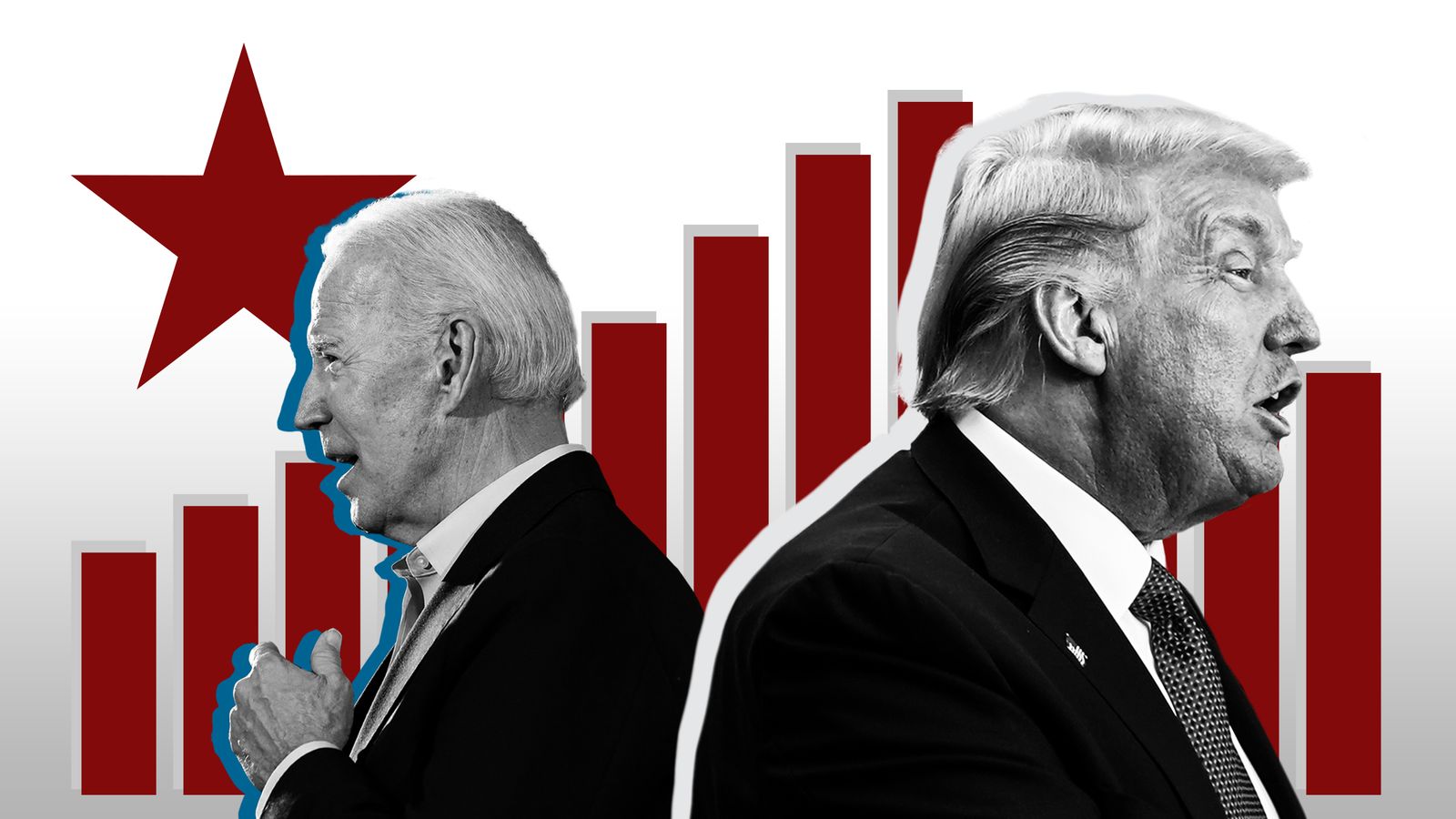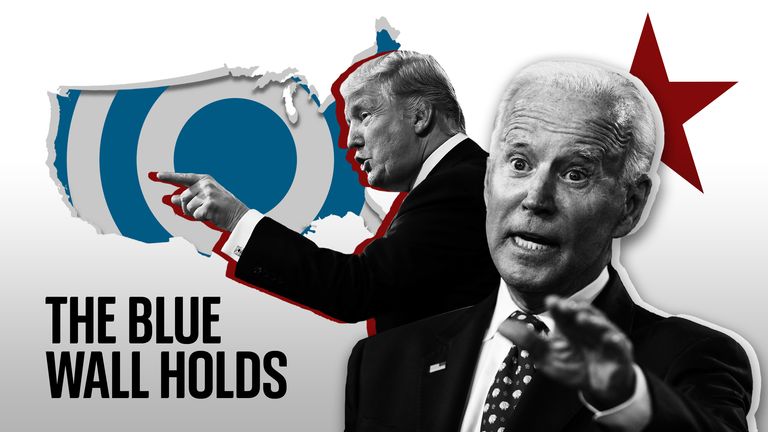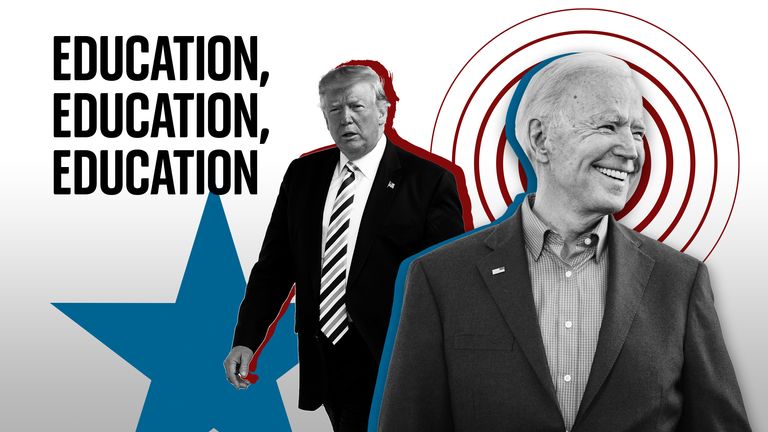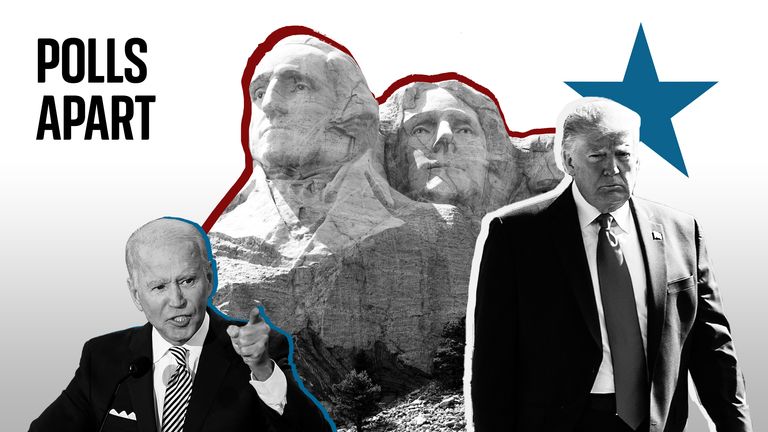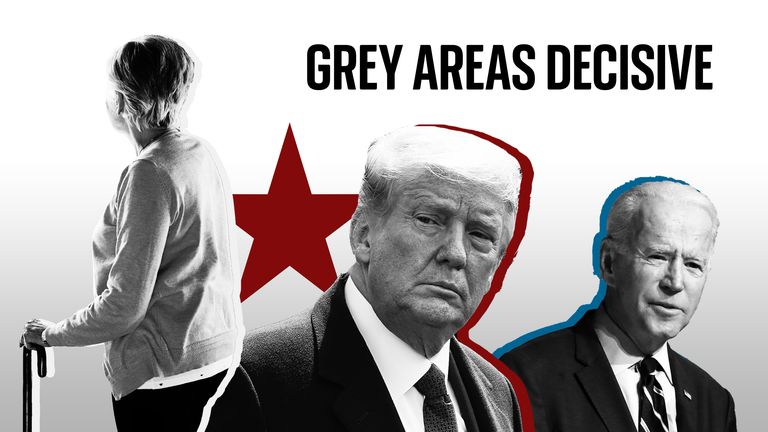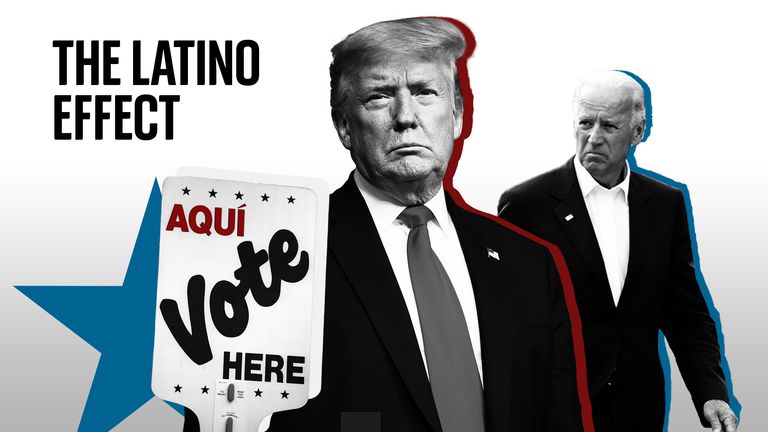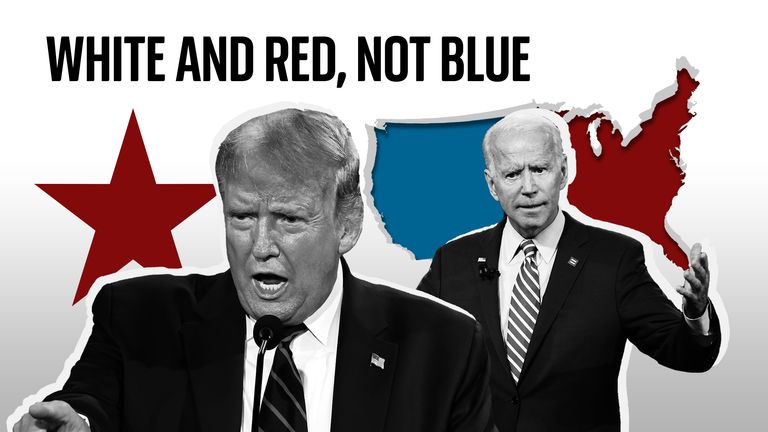Early indications are that the polls have been proved wrong, but Joe Biden has the momentum going forward.
The former vice president has regained some of the states lost by Hillary Clinton in 2016 and may have pulled of a historic victory in at least one formerly red state.
The election is still yet to be decided, but there are some trends in voting patterns that have become apparent.
1. The blue wall has been rebuilt
Mr Biden has won Wisconsin and Michigan, two of the states that fell to Donald Trump in 2016.
They are two of the states in the so-called “blue wall”, the group of northern states that have been steadily Democrat supporting in many recent elections.
Pennsylvania is still to be declared, but signs are that Mr Biden may close the gap on Mr Trump.
It was the switch in 2016 of many voters in those states to supporting Mr Trump that gave him the keys to the White House, with many blue collar voters sold on his America First vision and pledge to revitalise the US steel and coal industries.
In many parts of America’s Rust Belt – in states like Ohio, Indiana and to some extent Michigan – Mr Trump’s support held up.
But changes in levels of support in other parts, meant that Mr Biden was able to take the key states that may be enough to see him take the presidency.
2. The educated vote counted
Across all the swing states, in areas with higher levels of education, there was a surge in support for the Democrat candidate in 2020 compared with 2016
In general, the opposite was the case among those with lower levels of education.
All areas with high numbers of non-college educated voters have seen a rise in support for Mr Trump.
Blue collar workers, especially in the northern industrial areas, were previously seen as being his “base”, but the latest data shows this appears to have become even more the case.
The general trend underscores the growing polarisation of US politics and divisions in American society between those with different levels of education and often differing values.
In places like Arizona, the areas with higher levels of education may have made the difference.
Mr Trump held the state in 2016, even though his margin was the smallest since Republican Bob Dole’s loss to President Bill Clinton, but in 2020, the signs are that it might have flipped.
Counties like Pima, which includes Tucson and the University of Arizona, saw a significant rise in Democrat support among college educated voters.
The county has seen an influx in recent years of better-educated Americans, attracted to a growing economy, higher tech industries and lured away from states like California by lower prices.
32% of inhabitants of the county now have degrees, the same as the US national average. Pima is 92% urban.
3. Increasing urban/rural split
In several of the swing states, indications are that Joe Biden saw an increased vote share, compared to that of Hillary Clinton in 2016, among those living in urban areas.
Urban areas sometimes have higher proportions of college-educated voters and people from minorities – groups that tended to support Mrs Clinton previously – but Mr Biden saw more of them support him this time in states such as Georgia, Minnesota and North Carolina.
Even in states like Ohio and Iowa, which Mr Biden lost, Democrat support was up in urban areas.
4. Sun-seeking retirees may have abandoned the commander in chief
Sky News reported before the election on signs elderly communities in Florida may be less willing to vote for the man who they had helped into office in 2016.
In the end, that was exactly what happened, with Mr Trump seeing a loss in support in areas with a higher population of over-65s.
The same was true in Arizona, another key battleground, and a state with a larger retired population than the average. .
There was anecdotal evidence before the election that some elderly people were considering switching their vote to Democrat – and to a man who could himself be the oldest president in history – because they were keen to leave a legacy for their grandchildren.
The elderly, thousands of whom have died this year in the US from coronavirus, may have also been more worried about the pandemic and voted for a candidate who pledged to take it more seriously.
However, this did not occur across the board, and in many of the states where Mr Trump did well in 2016, especially in the north, there were signs that older voters backed him in greater numbers, despite the high levels of COVID-19 infection.
5. Latino vote swings sun belt
The Democrats had been optimistic they would at least pick up the swing state of Florida, if not the firmly red state of Texas, which the polls said could go their way.
In the end, they won neither. Behind the losses may be a dramatic swing to Donald Trump among the Latino population.
In Florida, 48% of Latinos backed Donald Trump.
Democrats on the ground say they believe it was the Latino vote that was key to Mr Trump’s success in the state.
Bradley Jackson, a Democrat activist in Florida, told Sky News he could see the effect as he campaigned.
He said: “One of the main things I did see was down in Miami Dade county – which is a Democratic stronghold – that the Hispanic population, mainly Cuban and Venezuelan, which have had socialist governments for so long, have taken that message that the GOP [Republican Party] have put out, calling Joe Biden a socialist and used that to convince people that this agenda is what is happening.”
5. ‘Shy Trumpers’ came out
Many commentators have said that the polls may have been wrong because of a phenomenon call the Shy Trumper – voters who did not tell pollsters they planned to vote Trump, and then did.
Many of the graphs above show that in several groups, support for Mr Trump went up.
In several states, particularly the former bellwether states like Ohio, and also including Iowa and Indiana, which were won by Barack Obama in 2008, Mr Trump’s vote share held up.
With turnout predicted to be the highest ever for a US election, it is clear the Mr Trump was backed by a huge number of Americans.
Former Republican adviser Lanhee Chen told Sky News: “Biden was winning by a much larger margin. Polls are a reflection of assumptions about who will turn out to vote and pollsters have to do their best to guess who is going to turn out on election day.
“Clearly what Trump has been able to do in these states is to create electorate that are more favourable to him. He’s turning out voters that are going to support him and demotivating those who would oppose him.”
